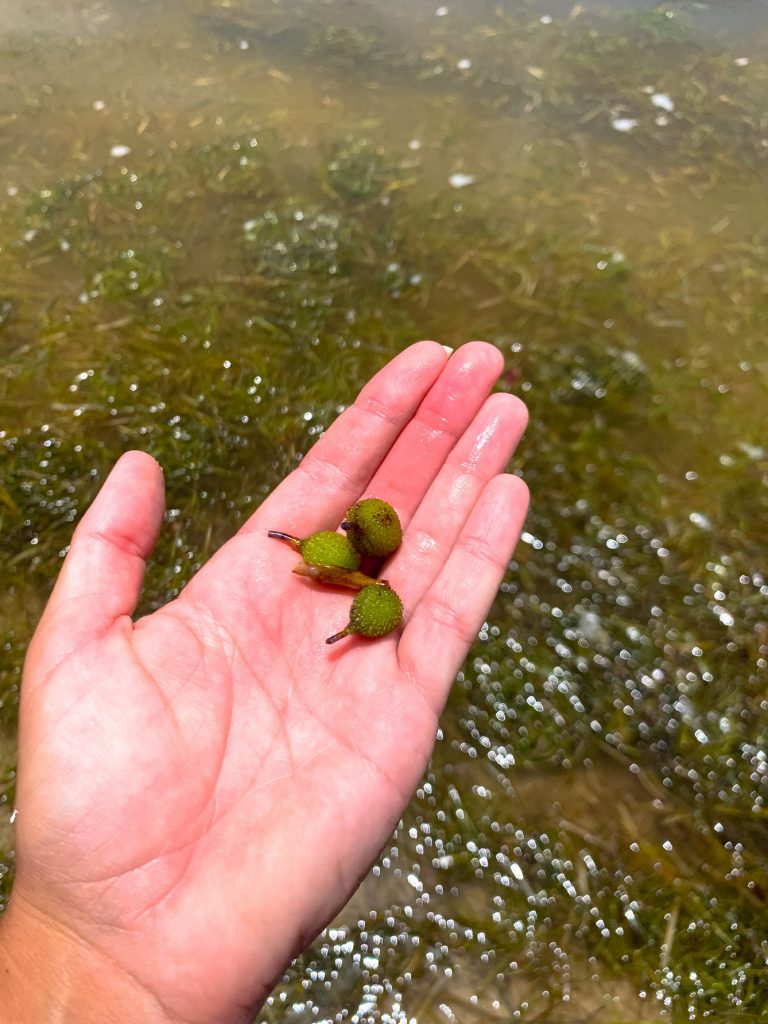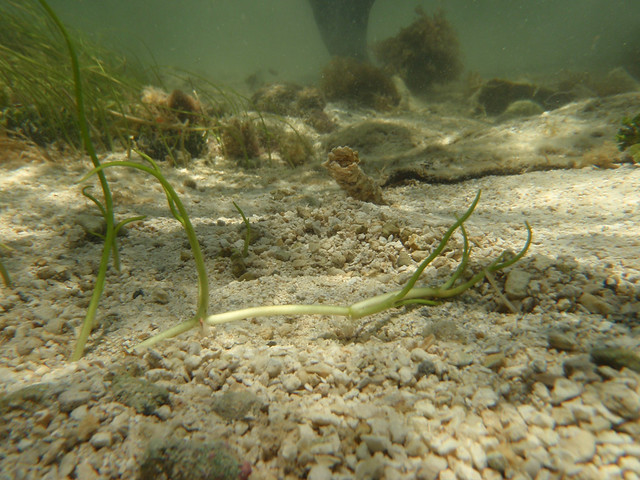Seagrass fruit, who knew?
Did you know that seagrasses are flowering plants? And did you know that many seagrasses also produce fruit?! Yep, there is such thing as seagrass fruit. Most people have never seen a seagrass flower, much less a seagrass fruit or seed. This time of year, you might get lucky enough to see the fruits of turtle grass floating on the surface or washed up on shore (see photo). But what’s so important about these fruits and the seeds within?

Seagrass reproduction
If you follow our blog, you know we talk a LOT about seagrass. We focus on things like awareness of seagrass scarring, seagrass restoration, new seagrass research, and other facts about seagrass. But, we have never talked about seagrass fruit before. Actually, we are not the only ones who don’t talk a lot about seagrass fruits. In fact, sexual reproduction by seagrass is one of the most under-studied aspects of their ecology.

Like many plants, seagrasses can reproduce and spread through vegetative growth. This asexual reproduction is accomplished by extending the rhizomes through the sediment and sending up new shoots at given intervals. Each of these new shoots is an exact clone of the parent, so there is not an increase in genetic diversity through this process.
Genetic diversity is important because it increases the chance that populations include genes that help them survive things like disease outbreaks or other stressful events. Sexual reproduction is the only way that organisms can create new combinations of genes (increase genetic diversity). Seagrasses live in coastal environments where stressful events and disturbances are common. Therefore, genetic diversity is important for seagrasses and so is sexual reproduction.
Flowers, seeds, and fruits
However, flowers, seeds, and fruits can be relatively rare in seagrass meadows and this can make them very hard to study. Also, many seagrass reproductive organs are cryptic (hard to see) or even buried beneath the sediment, making them hard to find and even harder to study. But, we do know some basic information about sexual reproduction in seagrass. We know that seagrasses have a variety of strategies for producing seeds. Some seagrasses, like turtle grass, produce buoyant fruits with seeds inside that can float and disperse long distances. Other seagrasses produce non-buoyant fruits that drop off of the parent plant under the sediment surface (like shoal grass). Like the seeds of land plants, seagrass seeds disperse in many ways. Seeds can be moved by animals (fish or birds), carried along by waves or currents, or even transported by a tiny air bubble.

Seeds come in many shapes and sizes! Each seagrass species seems to produce seeds that are specially adapted to their environment. Some are able to attach to the bottom with special hooks. Others have heavy parts that help them stay on the bottom.
But, seagrass seeds unfortunately do not have a very high success rate. Or at least research to date indicates that seedling survival is low. This could be related to predation on seeds, stressful conditions in the settlement location, or any number of other factors. The take-home message here is that we should cherish the seagrasses that have made it because it’s a tough world out there!
Source: Orth R.J., Harwell M.C., Inglis G.J. (2007) Ecology of Seagrass Seeds and Seagrass Dispersal Processes. In: SEAGRASSES: BIOLOGY, ECOLOGY AND CONSERVATION. Springer, Dordrecht. DOI: https://doi.org/10.1007/978-1-4020-2983-7_5
https://www.facebook.com/ncbs.ifas.ufl.edu/posts/2290745437675499
 1
1
